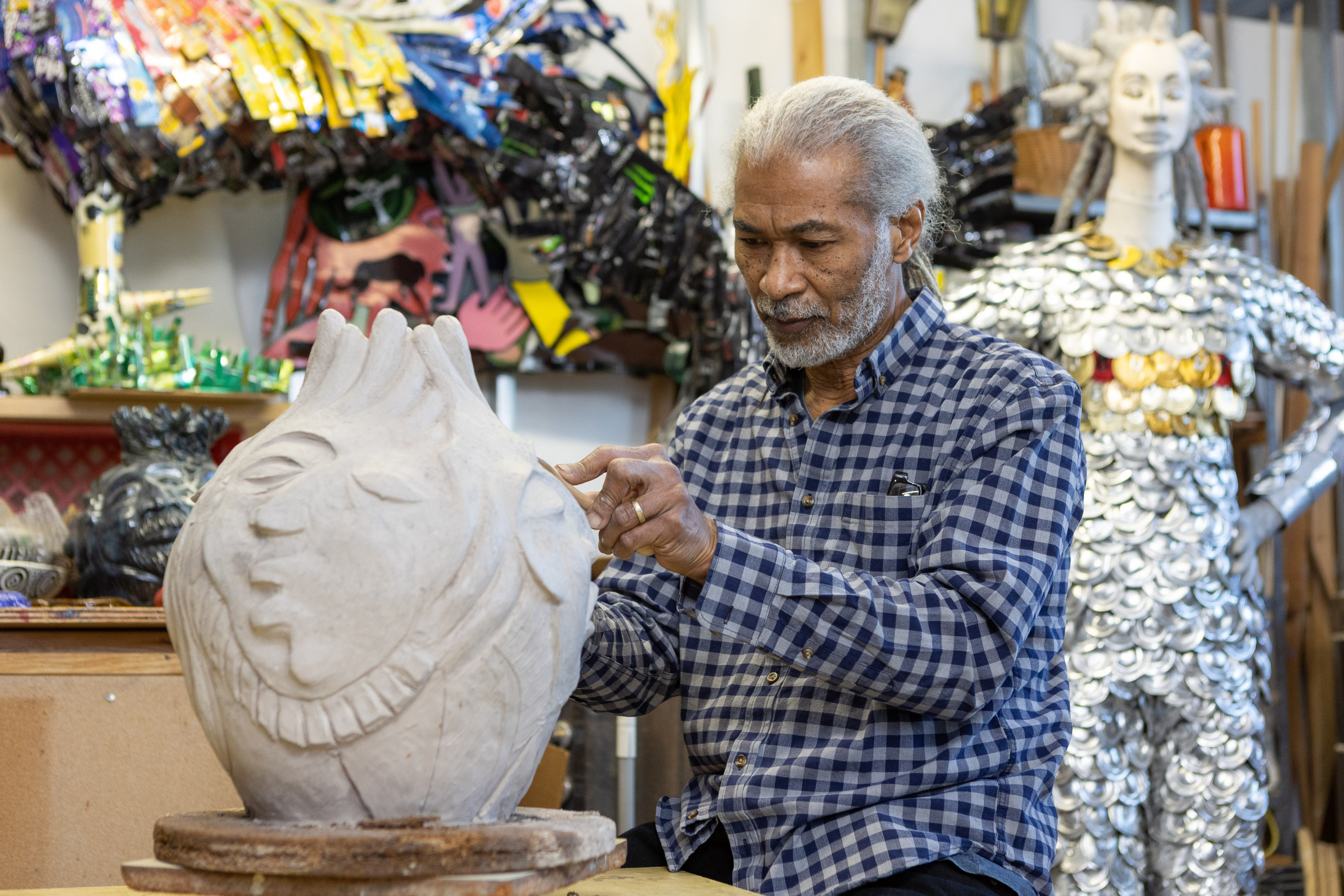I’ve lived in Brooklyn for going on 22 years now, but I’m still surprised to discover the connections this community harbors, and how often those connections lead back to Pratt. Though I suppose I shouldn’t be all that surprised. The school that brought me to this city to study writing years ago, that linked me to a network of expansive creators and thinkers, that rooted me as a writer in the borough I call home, has done the same for so many others. We’ve developed careers, traversed disciplines, and contributed to a long legacy of work, the work, supported and encouraged by our community to take unexpected paths and adapt and evolve along with this ever-changing city.
New York will transform anyone who walks these streets—challenging us, elevating and strengthening what we do and make. It’s in this vast cosmopolitan soup of individuals and ideas that we find and build our collectives. Graduates and students of Pratt Institute contribute to that abundance and bolster a swath of diverse communities in New York City, and around the world.
Community, the word itself, can describe a group of people living in the same place. But it also means—perhaps most accurately, especially here in Brooklyn—a feeling of fellowship with others. That’s part of what makes Brooklyn such a unique and magical place.
These alumni embody that feeling of fellowship, embracing the opportunities for connection this city has to offer. Through their contributions in Brooklyn and beyond, may we all—from incoming first-years to accomplished alumni—be further inspired to connect, support, and strengthen our own communities.
NOËL COPELAND BRINGS ART TO THE PEOPLE, STARTING AT THE BROOKLYN NAVY YARD.
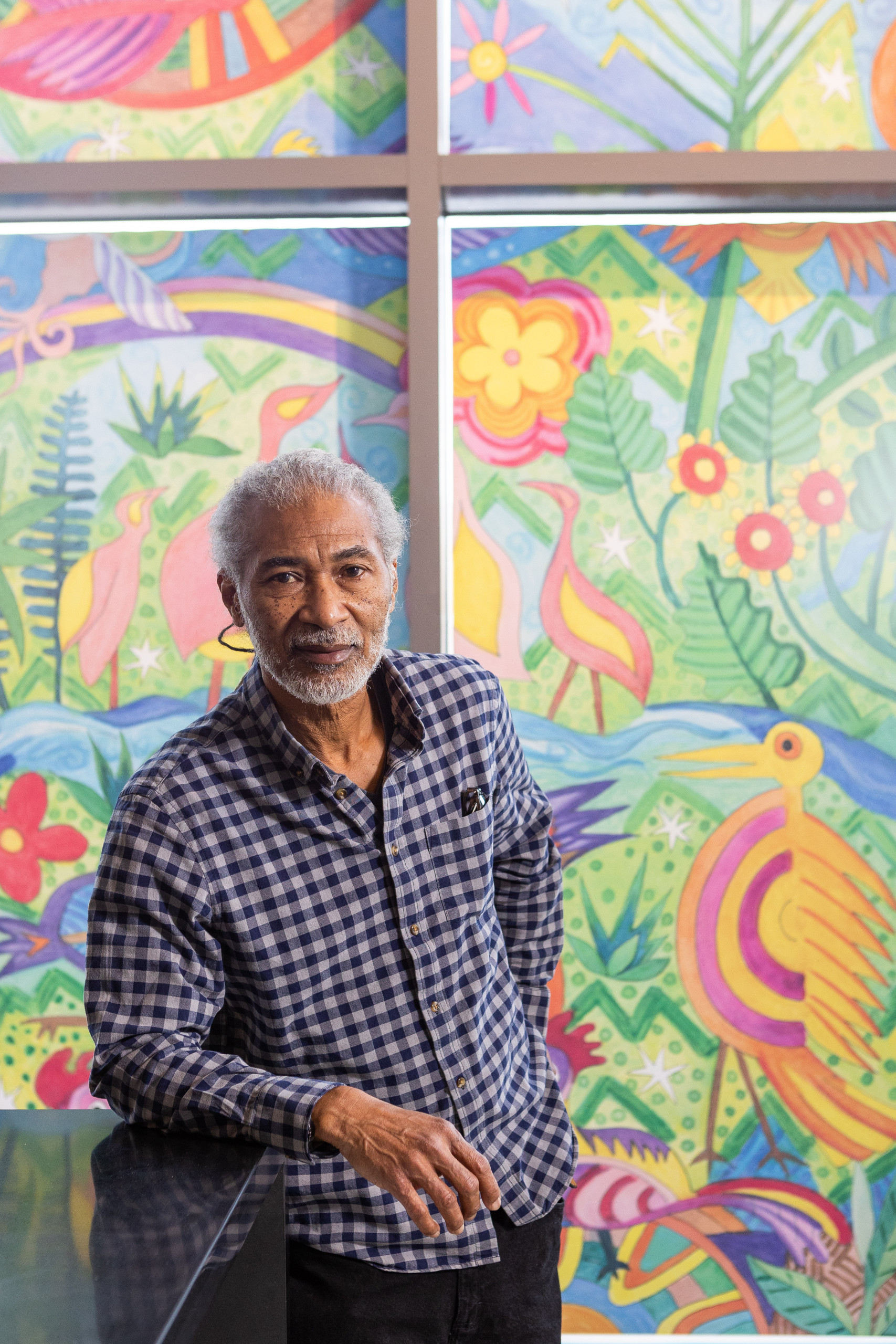
As an artist and educator, Noël Copeland, BFA Fine Arts ’82; MFA Fine Arts ’84, works to impact his community through both his sculptural installations and within the classroom. “Art making helps students to follow step-by-step instructions, develop focus and attention span, art vocabulary, and self-expression,” he says. “Students will learn to appreciate art, see art as a career path and participate in art activities. I enjoy teaching art, and especially teaching kids, because as a kid I did not have the opportunity for much art instruction.”
Born and raised in Morant Bay, Jamaica, Copeland studied at the Edna Manley College of Visual and Performing Arts, where his foundation drawing instructor was a graduate of Pratt Institute. So when he and his family immigrated to New York City in 1979, he transferred to Pratt, where he completed his BFA and continued on to earn his MFA in ceramics and sculpture, renting a shared studio nearby in Clinton Hill.
Today, more than 40 years later, Copeland continues his work from a studio in Brooklyn, now based in the Brooklyn Navy Yard on Flushing Avenue. This completely renovated and revitalized facility spans over 300 acres and houses, not just artist studios but over 500 businesses, including vast manufacturing and commercial spaces, business incubators, public spaces, a rooftop vineyard—and soon a new creative research facility for Pratt. “Being part of this community of creative thinkers is very inspiring and exciting,” Copeland says. “The artists support each other through programs developed by the Navy Yard.”
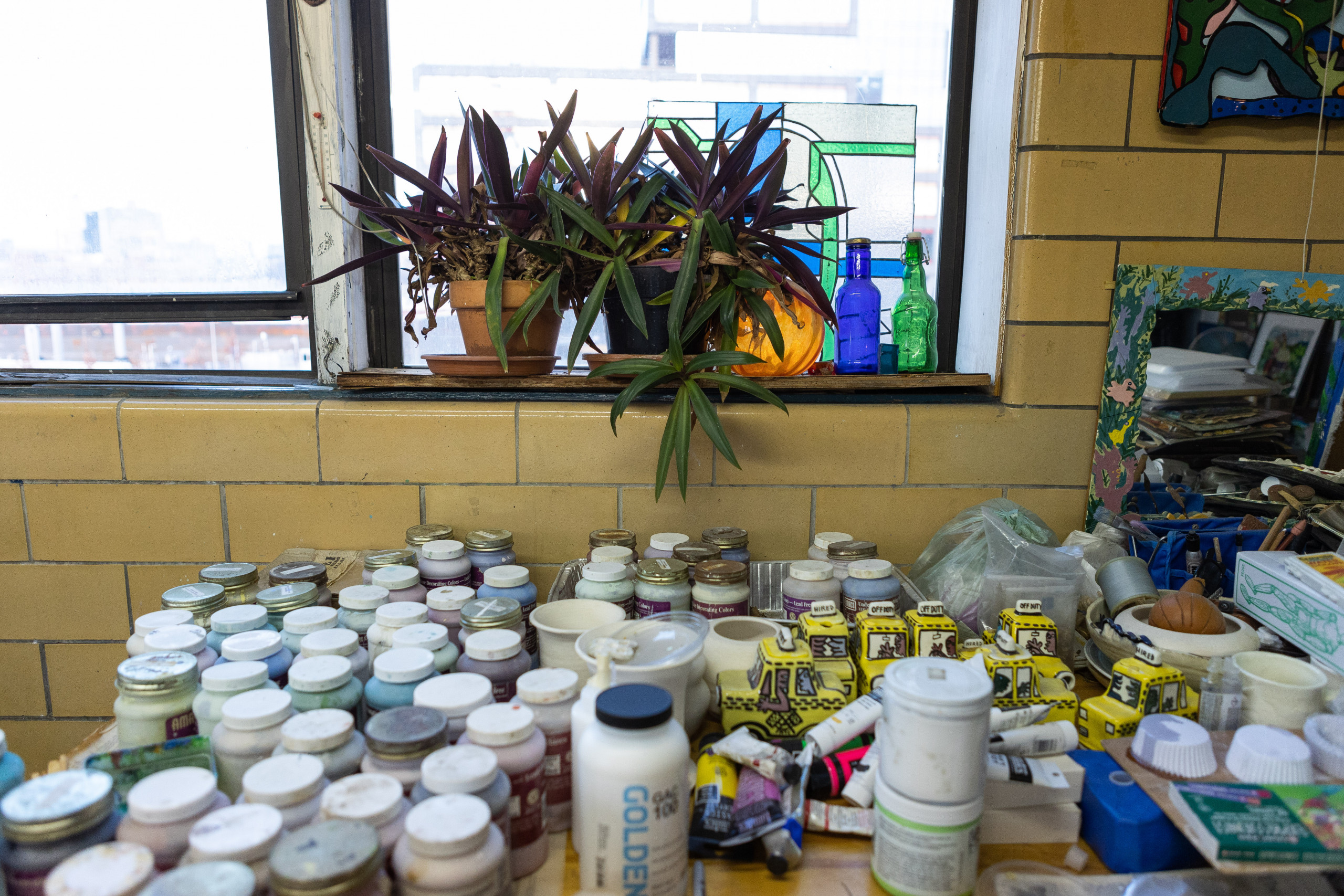
If you visit the Brooklyn Navy Yard, you’ll see one of Copeland’s several public installations in New York City, a colorful windowpane landscape visible from the exterior and interior of Building 77, titled Blue Mountain. From there, you can take the subway to Nereid Avenue in the Bronx to see Copeland’s Leaf of Life stained glass installation, inspired by the local community gardens. Or head to Manhattan’s East Broadway stop in the Lower East Side to see Displacing Details, Copeland’s first public commission, a tile work he made by hand in 1991.
Most recently, in January of this year, Copeland dedicated a 4-by-100-foot mural that incorporates children’s artwork at the Howard Houses in Brooklyn’s Brownsville neighborhood, a piece sponsored by New York City Artist Corps for the New York City Housing Authority.
And right on the Brooklyn campus, Pratt Institute presents two of Copeland’s original works within the Sculpture Park: Seven Hearts (2007), a stack of hearts representing love and unity, and colored cement works titled Brooklyn Blooms (2009).
“I see my public work as a way to engage an audience who would not have the opportunity, time, or means to experience art,” says Copeland. “Public art impacts a wide range of people and contributes to the community in a positive way.”
ELISA SHANKLE CREATES A SPACE FOR HEALING IN CLINTON HILL.
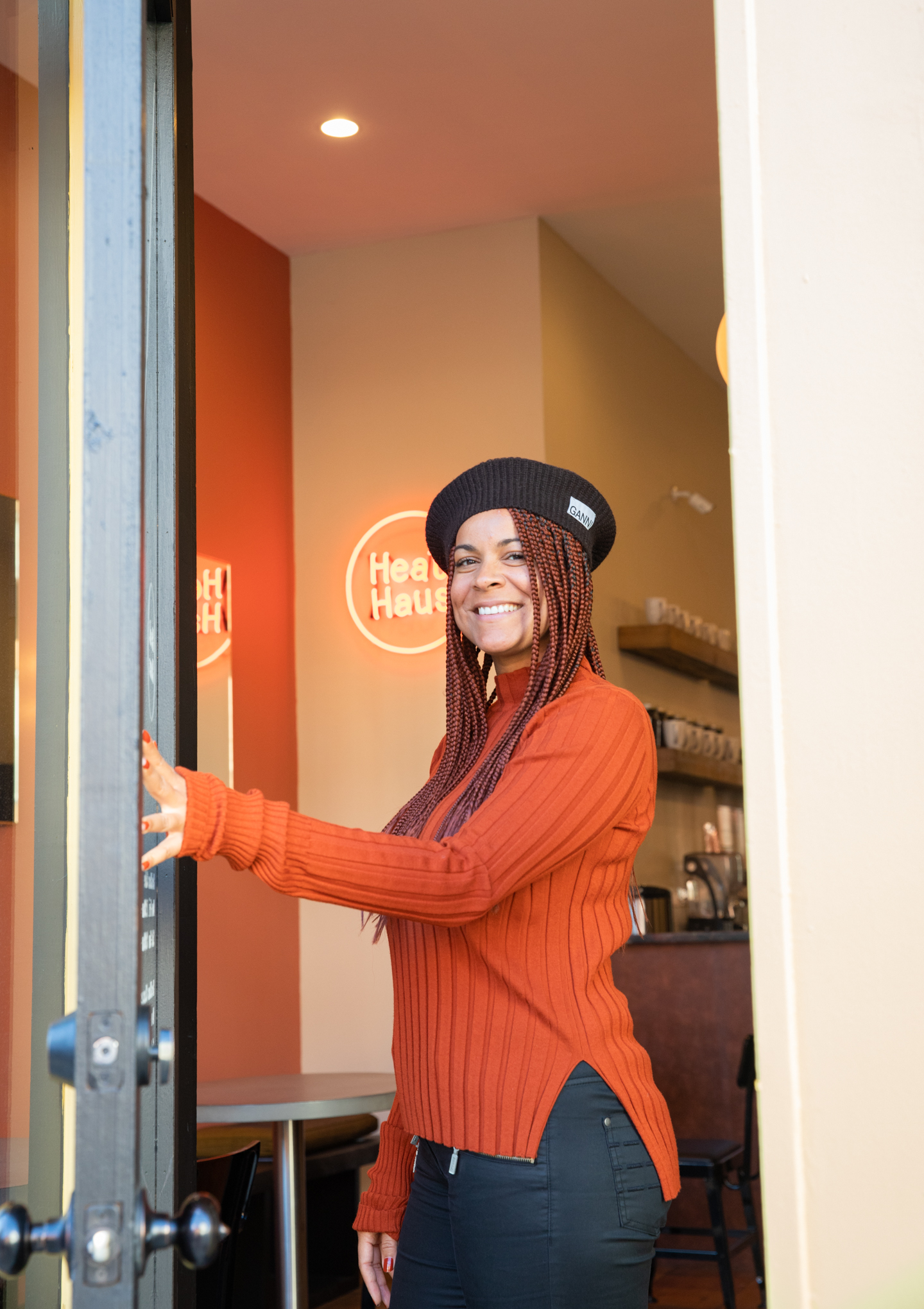
“My time at Pratt informed a lot of my journey, and more specifically my identity as an entrepreneur,” explains Elisa Shankle, BFA Interior Design ’09, interior designer and Clinton Hill business owner. “I often say I graduated with a life degree, not an interior design degree, because of the rigor and conceptually based practices that Pratt leads with.”
Upon graduation, Shankle worked as a designer and principal of her own interior design firm, Simplexity Designs, focusing on commercial and residential interior design for more than eight years. She has a real and undeniable passion for the aesthetics of spaces, and it’s that passion, paired with a personal exploration of plant medicine and holistic lifestyles, that ultimately drove her to launch her current business.
In 2018, Shankle co-founded HealHaus, with Darian Hall, as a wellness studio and café on Fulton Street, just south of Pratt Institute. Offering daily yoga sessions, meditation classes, and more, HealHaus aims to provide an inclusive space focused on holistic health and wellness.
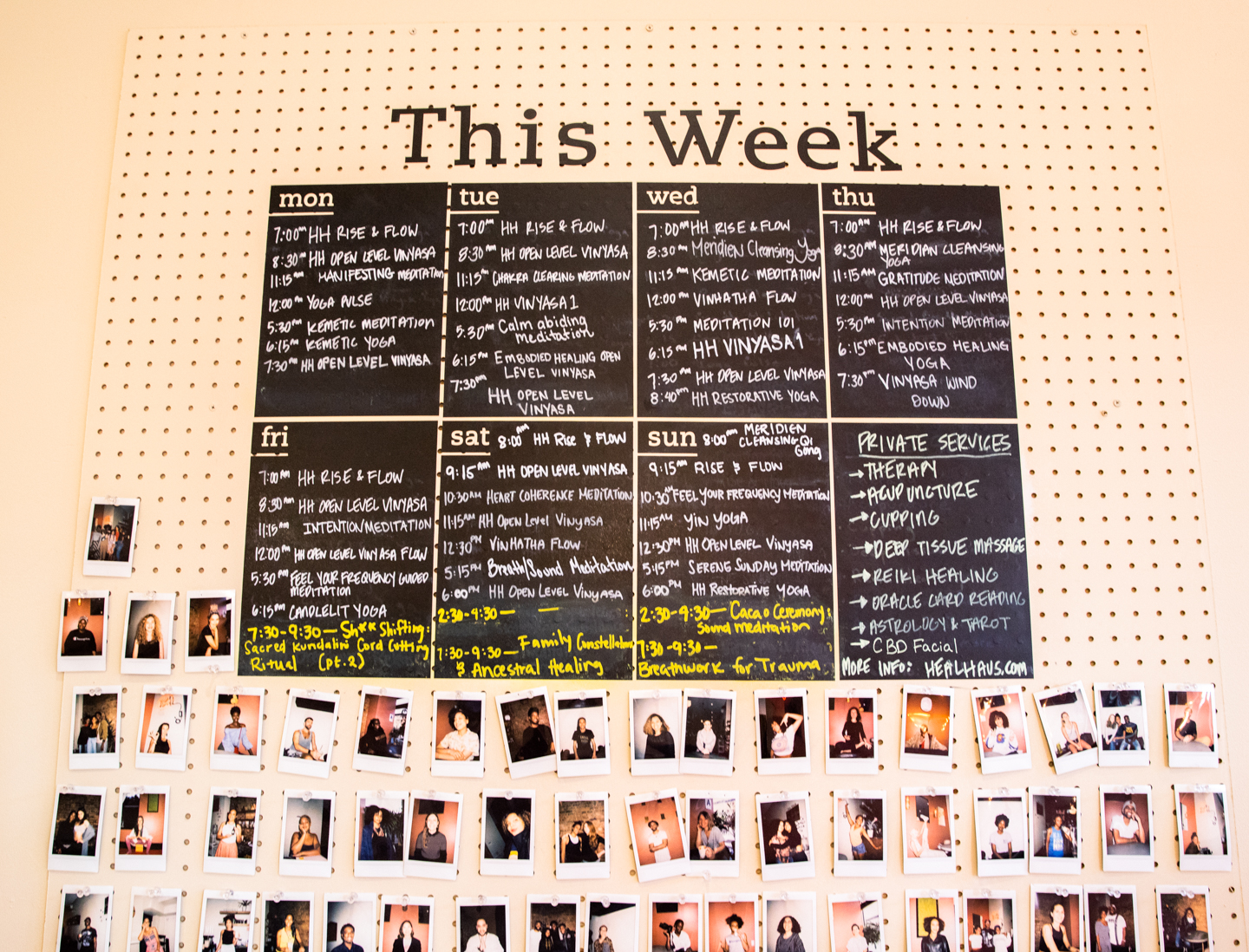
“Combining wellness and community for us is easy and automatic because we lead with integrity and honor the value and origin of this work,” says Shankle. “If you can come to HealHaus as you are, without judgment, with different access points, and can see yourself reflected here, then I know I am doing my job to ensure inclusivity is at the core of who we are.”
Since opening in May of 2018, HealHaus, a Black-owned business, has welcomed a cross-section of local Brooklynites and wellness practitioners, particularly wellness first-timers. Both Shankle and Hall understand that wellness practices are not always inclusive and accessible to individuals who are Black, Indigenous, and people of color, so they are committed to shifting what those practices look like and who they are for.
“Brooklyn to me is all about community, and honestly the reason why I stay here,” Shankle says. “Our growth and success has mostly been based on word of mouth, and that is all due to the strong community of members that we have that show up for their healing, and are dedicated to sharing that with someone else. Brooklyn is special because people are dedicated to supporting the locals and resonating with authentic and relatable experiences that we foster.”
MINA STONE FEEDS ARTISTS, AND ART LOVERS, ACROSS THE CITY (AND IN KITCHENS EVERYWHERE).
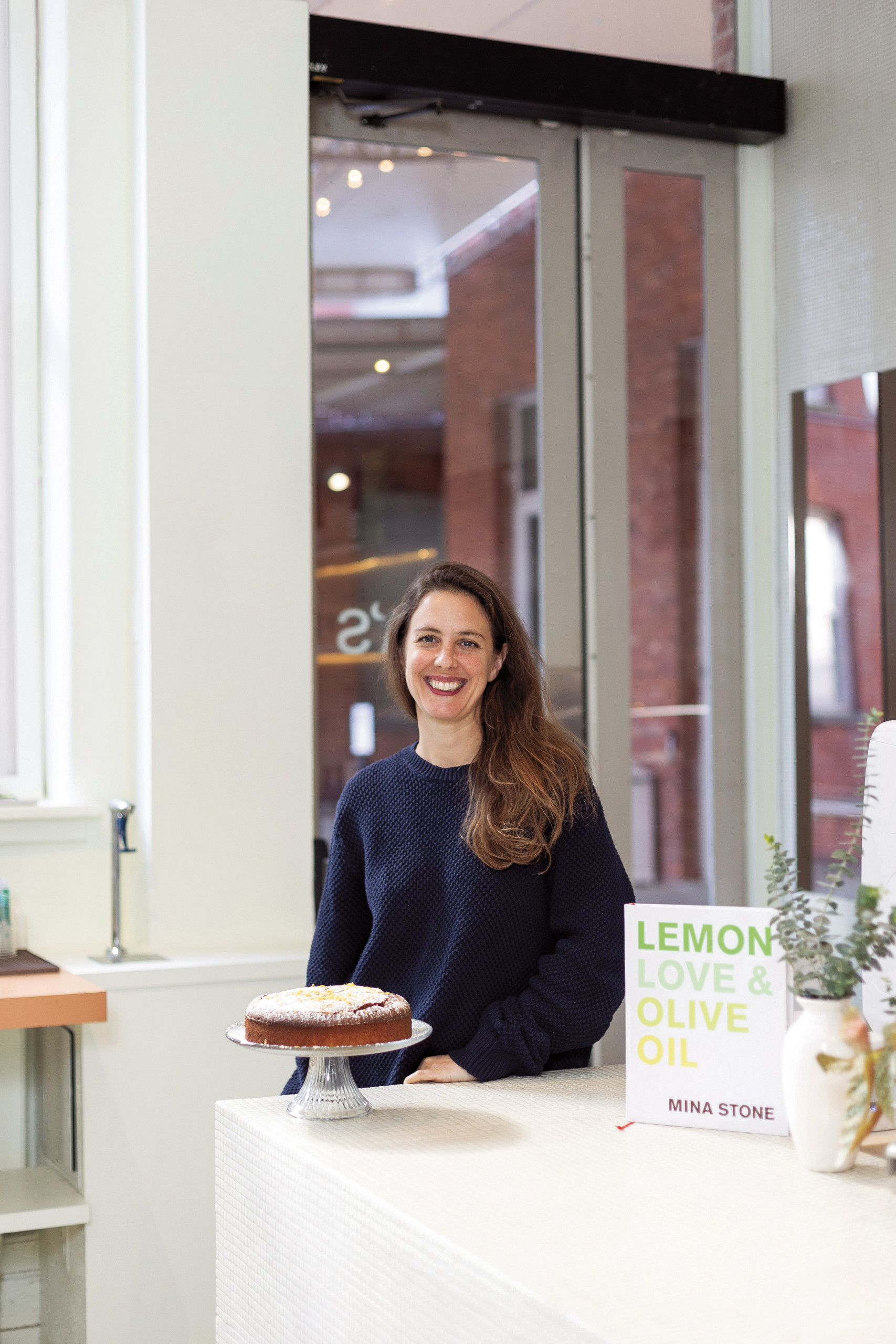
“Art school supported my creativity and threw me into the culture of art and NYC,” says Mina Stone, BFA Fashion Design ’04, chef, restaurateur, and author. “It also seems like no coincidence that going to art school, whether I knew it or not, propelled me to cook largely within the art world.”
Yes, Mina Stone is indeed the Mina of Mina’s, the all-day café at MoMA PS1 in Long Island City, Queens. Serving home-style Mediterranean-inspired cuisine—Mina’s father is American and her mother is Greek—the restaurant feels like a natural crest in a continuing career, 20 years and counting, that has Stone perfectly situated in the center of a Venn diagram of food and art.
Stone started cooking as a way to support her clothing design practice and then carried the intuition and spirit of invention that guided her design work into the kitchen. Stone’s first book, 2015’s Cooking for Artists, came about through a decade spent producing private meals and catering art-world events: post-opening dinners for the gallerist Gavin Brown, cooking for the painter Elizabeth Peyton, and preparing daily lunch for the artist Urs Fischer and his staff at the his Red Hook studio. It was there where Stone was able to experiment with simple, fresh ingredients on a willing and curious group to ultimately discover and develop her own, unique approach to cooking and sharing food.
“My hope is that food, the warmth and education that comes from cooking for others, affects people in a positive way,” Stone says.
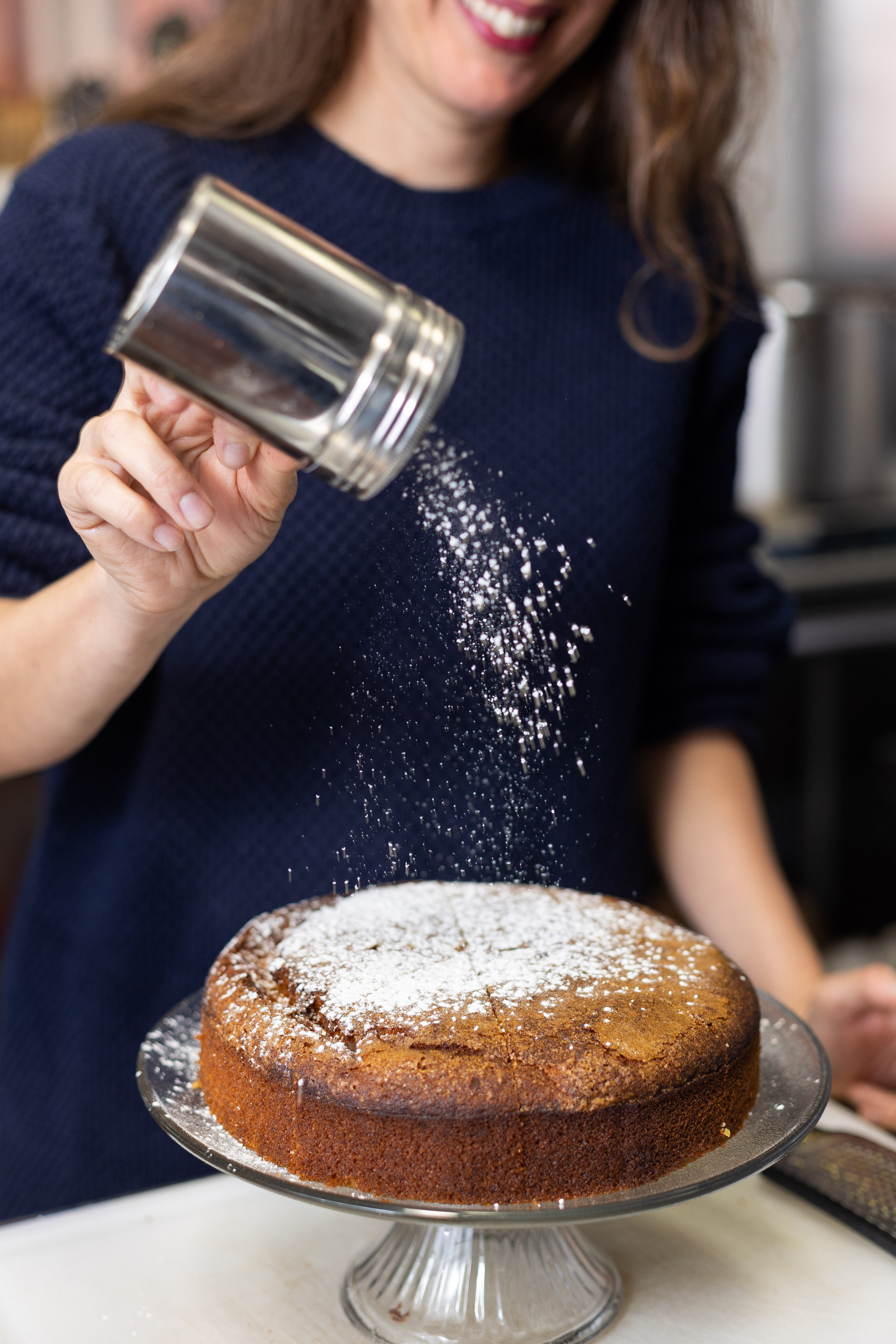
Most recently, in September 2021, HarperWave published Stone’s second book, Lemon, Love & Olive Oil, a collection of 80 recipes inspired and influenced by her Yiayia (her grandmother) in Greece, where Stone grew up spending summers in Aegina, an island in the Aegean Sea.
“You can’t shy away from the many things food represents,” Stone says. “Culture, identity, politics, ritual, and so much more. It is a conduit for connection.” Today, that conduit is incarnated at Mina’s café, bright, casual, welcoming—and serving shareable plates with a personal touch.
From Pratt to cooking within the art world, publishing cookbooks, and now operating her eponymous café within one of the city’s most prominent contemporary arts institutions—Stone has navigated her creative journey from her home in Brooklyn with her family, only blocks from Pratt, in a neighborhood where she’s lived for more than 20 years.
“Brooklyn is my home and my community,” she says, noting that everyday experiences around Fort Greene, Clinton Hill, and Bed-Stuy feed and nourish her work. “I love walking up the street to my bodega, sitting with my neighbors, walking to the park or to school. All of it. I love it. It is my grounding fuel.”
BRYNNA TUCKER INCUBATES COMMUNITY-CHANGING PROJECTS AT THE BROOKLYN PUBLIC LIBRARY.
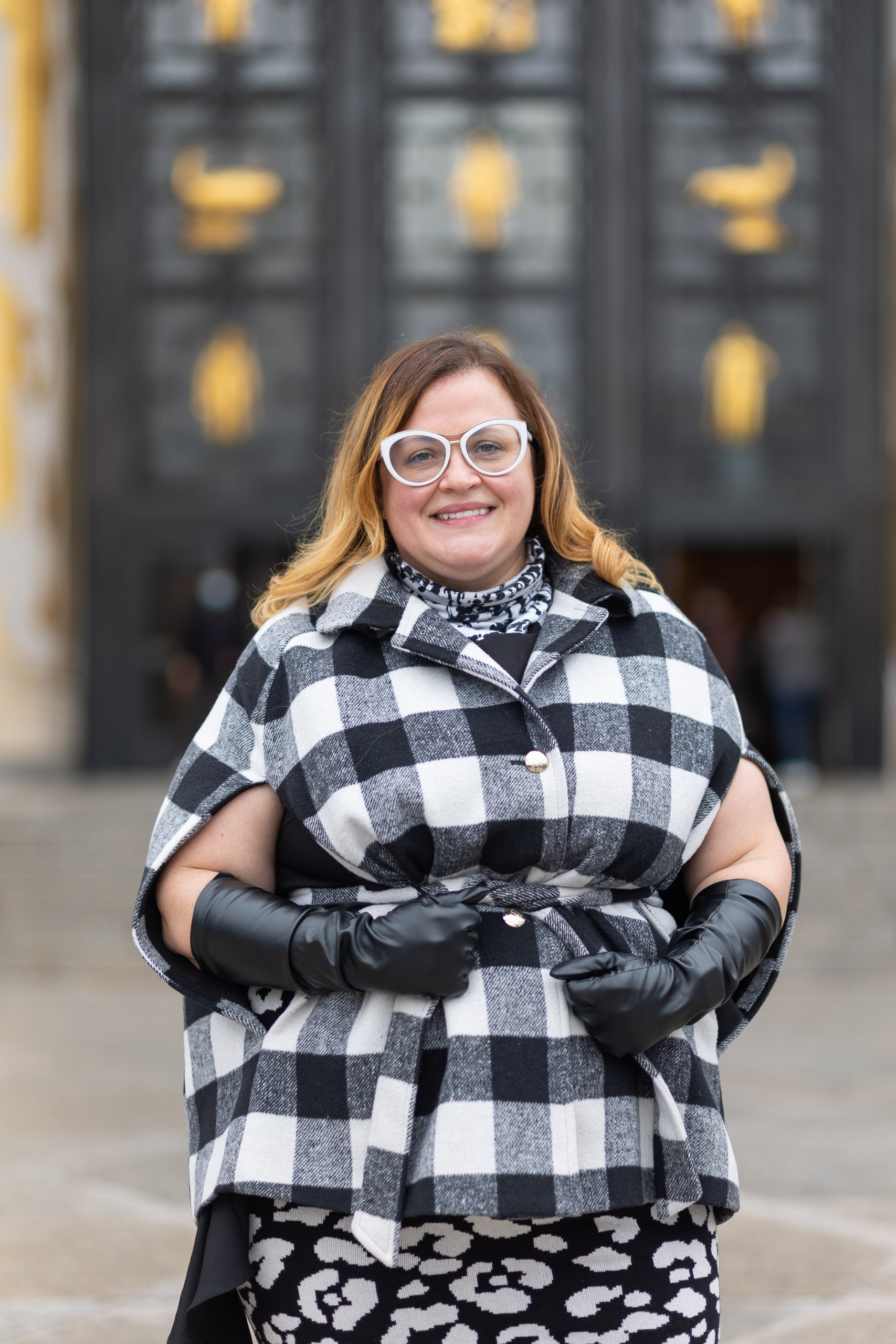
“Brooklyn is definitely my longest standing collaborator,” says Brynna Tucker, MFA Fine Arts and MS History of Art and Design ’02. “I’ve used the sidewalk as an art gallery, my neighborhood as a resource for teaching, and now the borough of Brooklyn as an innovation hub for community change.”
In 2016, Tucker joined the Brooklyn Public Library to manage its BKLYN Incubator program, where she is currently the senior manager of innovation. “I found the career of my dreams here at the library, surrounded myself with the best friends a person could have, and established a life here in Brooklyn that truly feels like home,” Tucker says.
Earning her dual master’s degrees in February 2002, just months after September 11, Tucker found herself in a new and changing world post-graduation, where career routes through the art world and nonprofits she had imagined were not readily available. But soon she found herself a full-time position at Art In General, the nonprofit exhibition space that operated from 1981 to 2020. This position within a long-standing creative community afforded Tucker many opportunities to collaborate with emerging artists and learn about the art world from the perspective of a nonprofit gallery, but ultimately she felt called to work outside the gallery world.
Tucker returned to Pratt Institute, not as a student but in a role as internship coordinator, a position that developed into associate director for entrepreneurship and experiential education. She also founded a student incubator called the Refinery, a precursor to the Ignition Lab.
In her 12 years working at Pratt, Tucker says she built a network of artists, activists, entrepreneurs, and radical educators, and learned how to use her education as an artist to build what she describes as “a different type of practice that empowers change.”
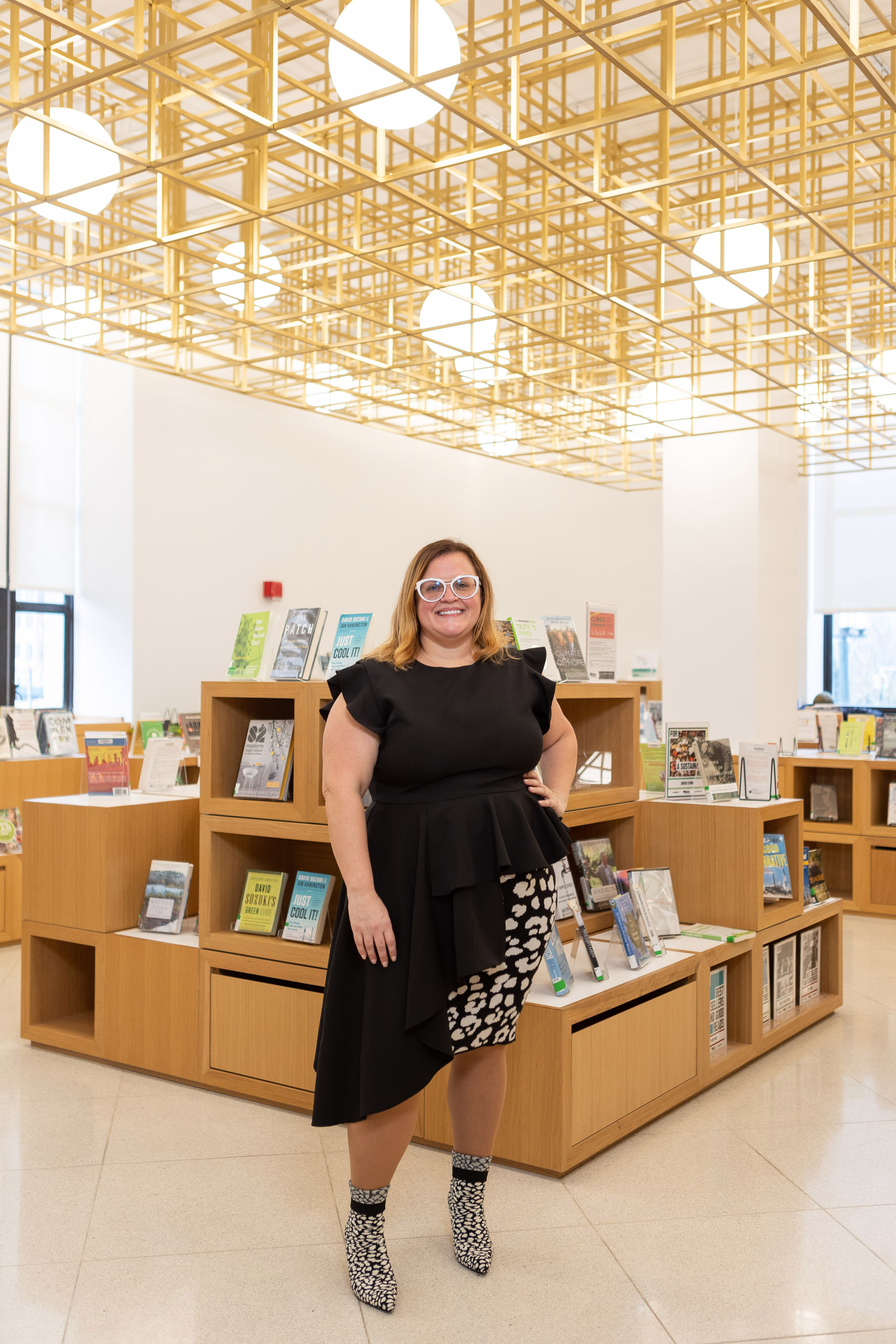
Now, through the BKLYN Incubator program at the Brooklyn Public Library, Tucker champions and supports community-driven initiatives borough-wide, like Shine on Me—launched by fellow Pratt alum Donald Peebles, MSLIS ’14—which provides library resources to adults experiencing homelessness. Other BKLYN Incubator-supported programs include A Virtual Library for All, serving incarcerated patrons; the BKLYN Robotics League, offering students a “robot in a box” maker-space experience kit; and Brooklyn CookMobile, a mobile food literacy kitchen cofounded by Adeeba Rana, MSLIS ’13, initiatives that resonate with a community’s need as uniquely understood by the library staff who boldly develop them.
“Creativity and curiosity are one thing, but taking action to make something you really believe in happen is a whole other layer of bravery,” Tucker says. “If you’ve never worked with people that work at a public library, find a way. They know our communities better than most. It will change your life.”
Lifting up that expertise for the benefit of all is at the heart of Tucker’s work. “Brooklyn is amazing because of its diversity, but I am a cis, straight, white, US-born, college-educated woman. Living in this city has shown me that so many systems are built for my success, and so often at the expense of others. I need to be part of building systems for everyone’s success if I want to dismantle and change that.”
